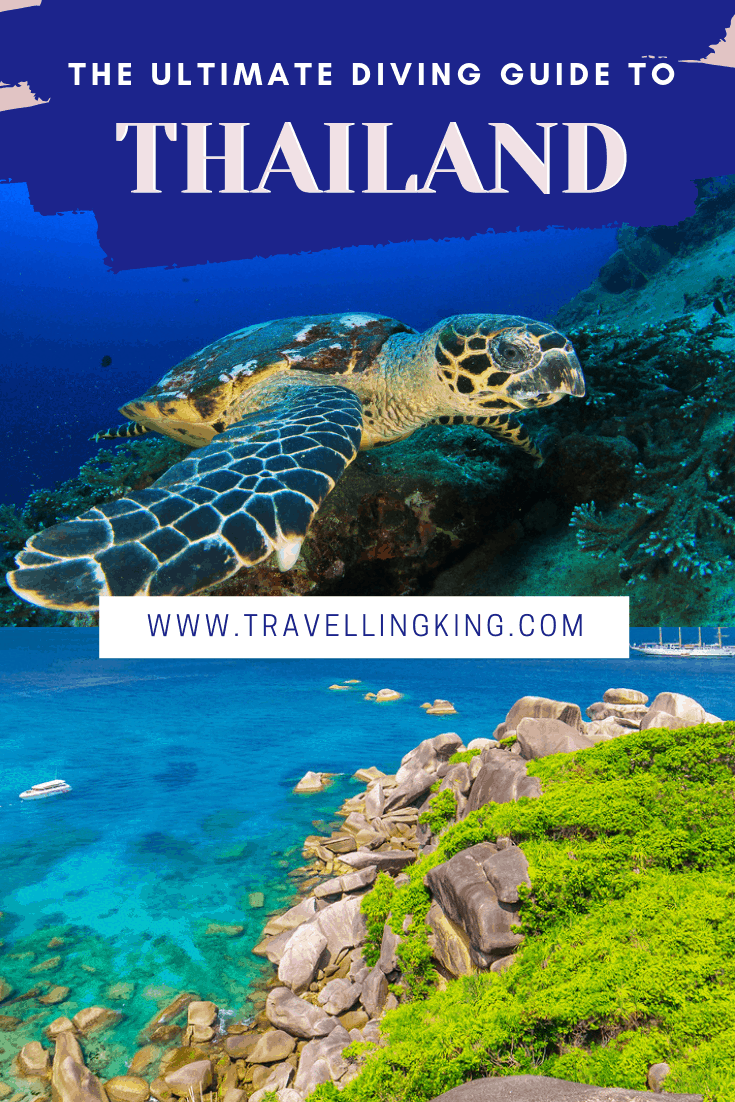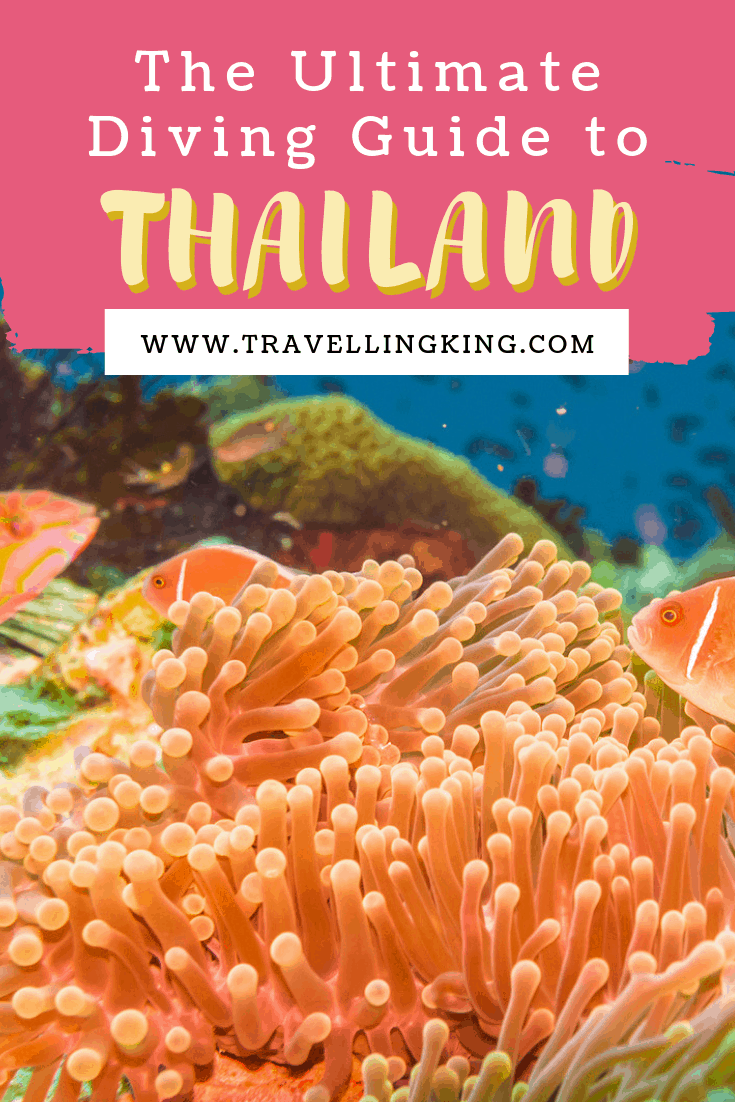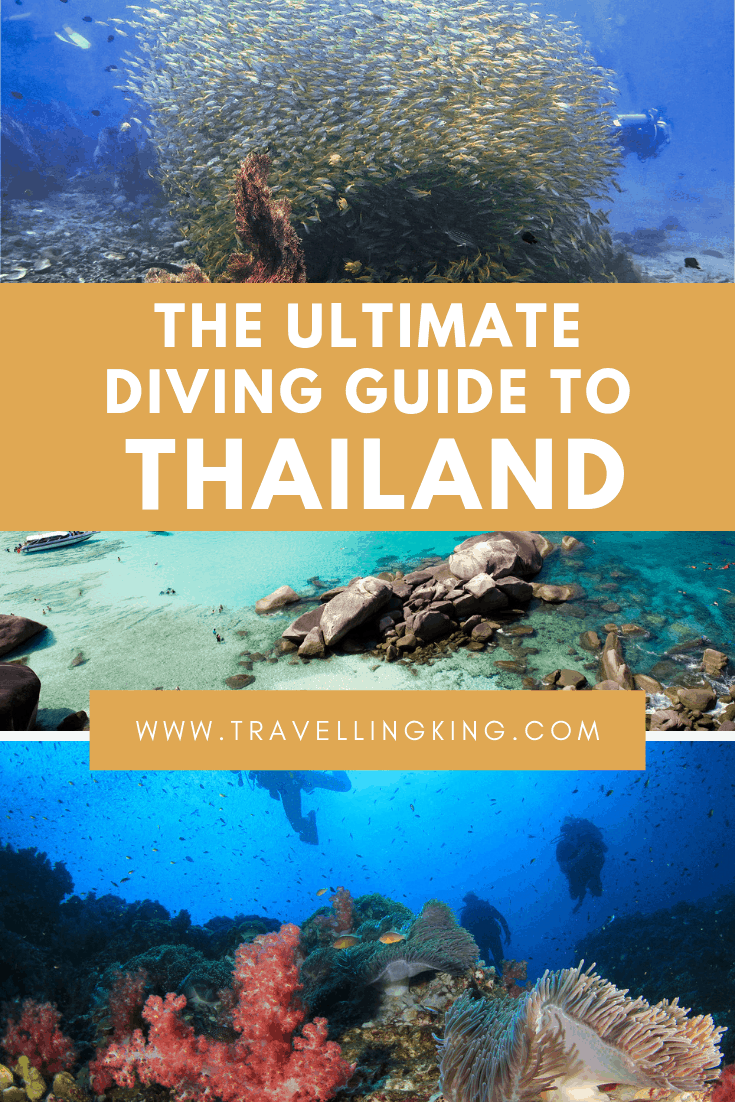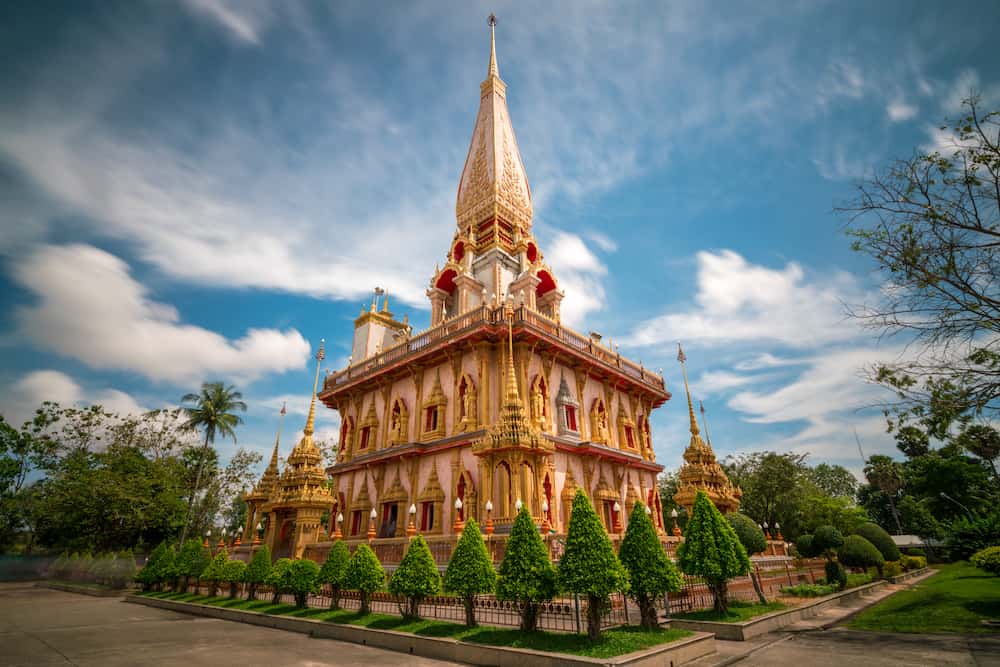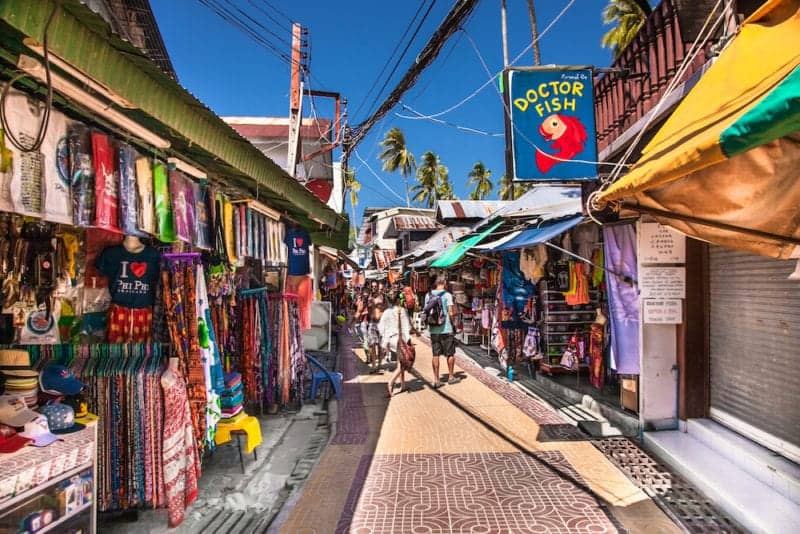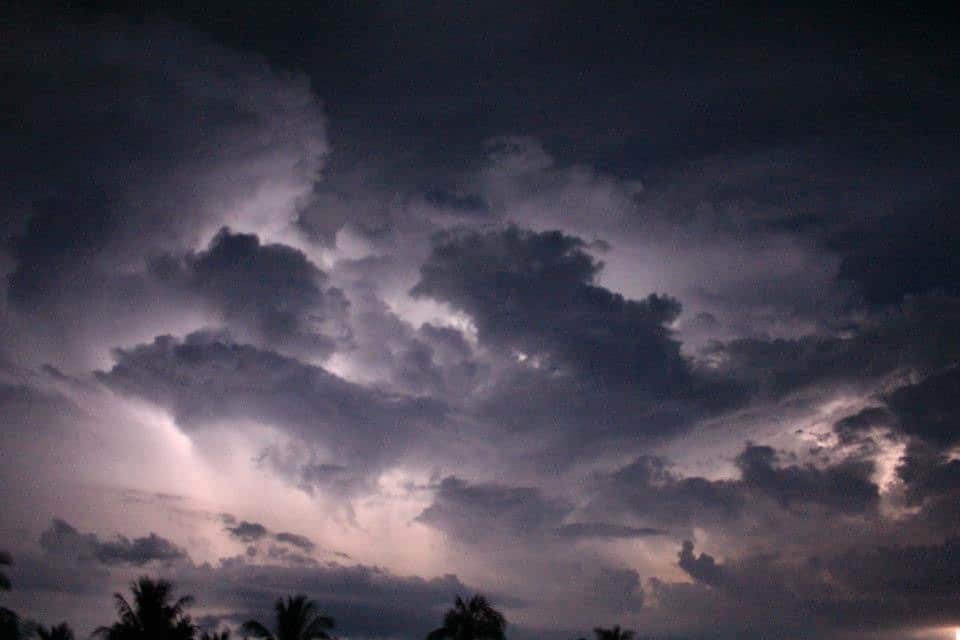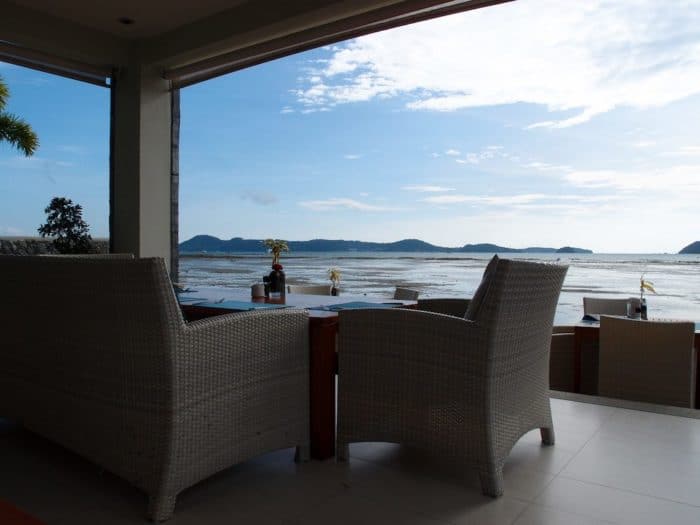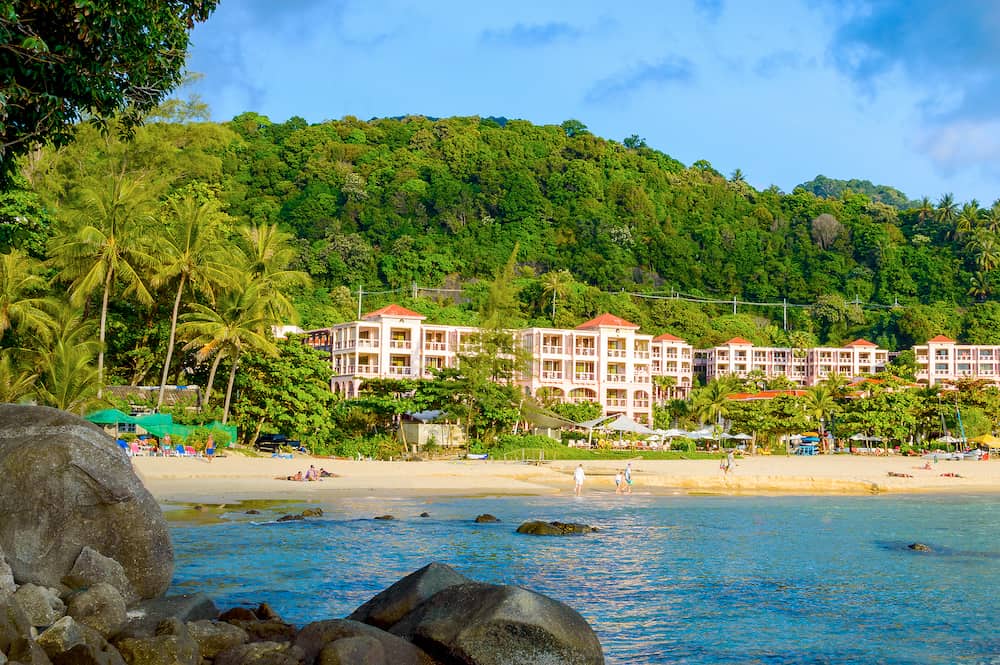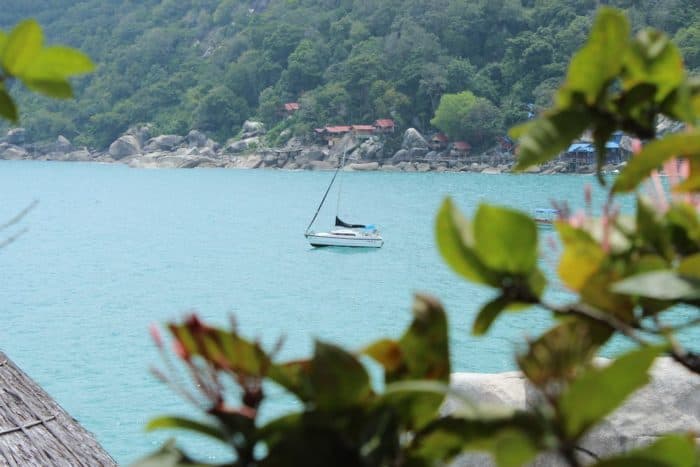The Ultimate Diving Guide to Thailand

Aside from tropical stretches of gorgeous beaches with white sand and softly waving tropical palms, there’s a whole world under the surface to be discovered!
Submerge beneath the surface into a world of flickering schools of colourful tropical fish, vibrant corals and memorable marine life encounters that will leave you wanting more, including the chance to see turtles, non-aggressive sharks and even pelagic species such as whale sharks and manta rays if you’re lucky!
Why limit yourself on holiday to only exploring the world above the water when Thailand boasts over 349 recognised dive spots, 153 kilometres squared of stunning coral reefs on its coastline.
This is the ultimate diving guide to Thailand, written by divers for divers, with the hottest destinations for everyone from novice to professional.
Plan your trip?
Avoid hidden fees in the exchange rate while withdrawing from millions of ATMs abroad, paying in restaurants and shops, and buying your accommodation and flights using the Wise Card. You can hold up to 40+ currencies at once to spend in in over 150 countries, and convert them in real time with the free Wise app.
Need help planning your trip from start to finish? Check out these helpful links:
- Cheap flights
- Savings on accommodation from hostels to luxury hotels
- Affordable car rental options
- Affordable sightseeing tours and day trips
- Travel Adapter – All in one so you don’t have to carry a bunch around
- Don’t be silly and forget Travel Insurance! Get hurt and you’ll regret it…
This post contains some affiliate links for your convenience. Click here to read my full disclosure policy. You can also read our content/editorial policy here.
What to expect Scuba diving in Thailand
Thailand is rated as one of the world’s greatest diving destinations due to the breathtaking diversity of species that inhabit its reefs. With a well-established scuba industry there are a myriad of options for those who want to add another dimension to their travels by exploring the world beneath the surface. Here we have only listed the very best destinations, selected by divers for divers!
Dive trips often leave in the early morning and return at around lunchtime. You can opt to dive off a big boat with up to 40 divers on board or you can opt for diving off a traditional longtail boat, providing a more intimate and personalised experience. For longer distances, it’s common to travel by speedboat.
Weather and conditions at sea in the high season are pleasant and consistent. Visibility may fluctuate during the seasons according to tides and also coral spawning which may affect the visibility, in general, you can expect around 15 to 30 metres of visibility. The sea boasts a temperature range of a warm 27°C to 30°C all year long, making it ideal for short wet suits or even just diving in a rash vest.
In the low season, the coasts are battered by frequent monsoon storms. Dive sites have fewer divers but sometimes you will find diving trips cancelled due to bad weather or dangerous conditions. When travelling by boat in the low season, it’s advisable to go prepared with seasickness tablets to avoid suffering during journeys.
Aside from seasickness tablets, if you plan on diving it’s worth bringing aboard several other items for your trip include sun cream to avoid sunburn due to the intense sun, hat, dry bag to keep your valuables dry during boat rides.
Dive trips usually consist of two dives, with lunch served in the middle. Lunch is usually served onboard the boat or on a beach if you’re diving off a small boat or longtail. Diving schools offer vegetarian options and can cater to food allergies.

I want to learn to dive! Scuba Diving in Thailand for Beginners
There are several options for those who want to take the first plunge into the world of diving.
Discover Scuba Dives are ideal as a first step into the underwater world without having to commit to a full Padi course.
This one-day experience consists of two dives with an experienced instructor to a maximum depth of 12 metres. If you’re nervous about being underwater, choose a dive school with a swimming pool where you can do the practical exercises before venturing out on the boat.
You will be taught basic skills such as how to clear your mask if it fills with water to make you feel more comfortable under the water. At the end, your discover scuba experience counts towards the first two open water dives of the Padi Open Water Course if you decide to pursue the full certification.
Open Water Courses are the first level of certification for divers. At the end of your course you will be certified to dive to the depths of 18m with this lifetime certification that never expires! The course usually takes around four days, the first two days will consist of studying theory and partaking in pool sessions to practice skills before heading out to sea.
The following two days consist of two daily dives, the first day to a maximum depth of 12 metres and the final day to the maximum depth of 18 metres followed by a short final exam. Opt for smaller diving schools that ensure small groups of divers to ensure a more personalised experience and the full attention of the instructors and divemasters.
If you’re set on doing the course, try to do the theory and exam prior to travelling, so that it doesn’t take up your precious holiday time. The theory and exam can be done in a dive centre in any country and is valid for a year, plenty of time for you to plan where you want to carry out your open water dives!
Advanced Open Water Course is the next level, you will be certified to dive to a maximum of 30 metres which will open up a gateway to new experiences such as exploring wrecks, deep dives and even night diving. The course takes two days and consists of theory and four dives.
To become a professional diver, you can take the Divemaster Course or the Instructor Certification Course, both of which can take around a month or longer, which includes an internship diving and working within a diving school. Look for PADI 5 star instructor centres for excellent quality courses.
Recommended PADI Dive Courses in Thailand:
- PADI open water diver course (Koh Samui)
- 3-Day PADI Open Water Scuba Diving Certification Course in Koh Phi Phi (Phi Phi)
- Discover Scuba diving with 2 dives on Koh Tao (Koh Tao)
- Learn to Dive – PADI Open Water Course (Koh Tao)
- PADI Open Water Diver Course (Krabi)
- PADI Open Water Diver Course (Koh Lipe)
- Padi Open Water Diver Course (Phuket)
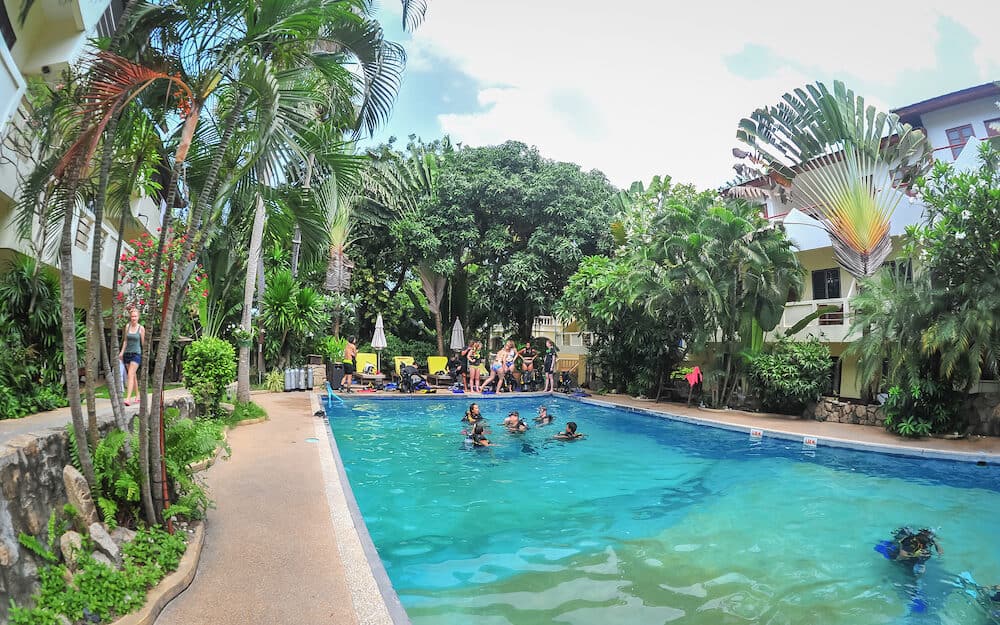
What will I see on my dive?
Thailand boasts a diverse variety of incredible marine life including over 2125 different species under the surface!
The colourful reefs are abundant with reefs that include giant sponges, large gorgonian fans and plenty of anemones and you can see everything from the tiniest seahorse or clownfish to some friendly giants including the endangered whale shark, the largest fish on earth, and the elegant manta ray.
Macro photographers will love the smaller critters which include colourful nudibranch, seahorses, harlequin shrimp, frogfish and seasonal ghost pipefish. There is life in every nook and cranny and those with experienced eyes will be able to find a whole host of treasures.
If you’re lucky you may even encounter endangered green or hawksbill turtles, cruising along the reef, stopping now and again to munch on some bubble coral.
There are several non-aggressive shark species residing in Thai waters, including leopard sharks, gentle bottom-feeding sharks that instead of teeth sport rows of tiny nubs like a nail file and are incredibly peaceful.
They can be seen lounging around on the sandy bottom during the daytime. You can get up close and personal with them as they are very placid.
The other common species of shark seen in Thailand is the skittish blacktip reef shark which is more terrified of you than you are of it. They can be seen whilst snorkelling, near the surface, and are incredibly shy, dashing off at the first sign of snorkelers.
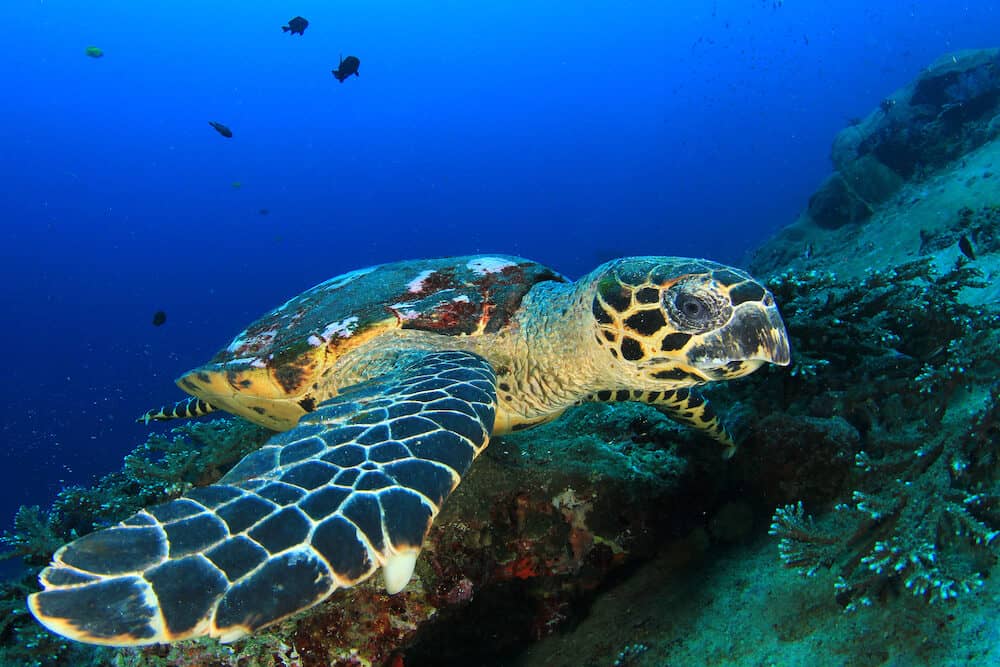
What about dangerous species?
As we mentioned above, sharks in Thailand are not aggressive and don’t attack divers. The fear of sharks is often unfounded and you can swim safely in waters shared with sharks. Encountering sharks whilst diving, will open your eyes to how they are often gentle, misunderstood creatures who are more terrified of humans than humans are of them.
Of the 400 species of shark in the world, only 5 of them are dangerous to humans, none of which live in Thailand! The most commonly seen species in Thailand include leopard sharks, tiny bamboo sharks, nurse sharks, blacktip and grey reef sharks.
Most of the sharks in Thailand are not dangerous, however there is a species that is rarely spotted and is called the bull shark, encounters with this species are rare. The most dangerous species in the world is the Great White which is a cold water shark and does not frequent the Andaman or Gulf Coast.
There has only been one single confirmed case of a shark “attack” in Thailand in the last 500 years, meaning that divers, swimmers, surfers and snorkelers have nothing to fear.
It is also worth remembering that sadly that though shark “attacks” worldwide only reach 100 a year, humans are responsible for killing up to 100 million sharks annually.
The chance of being “attacked” by a shark is less than being struck by lightning or winning the lottery!
The most dangerous species in Thailand include some smaller critters such as lionfish, stonefish, stargazer and the Indian Ocean Walkman and the banded sea snake. These animals are armed with venomous spikes used for self-defence and an incredible camouflage system which allows them to blend into the sandy bottom or on rocks.
Excellent buoyancy is a key skill in diving, so you don’t touch the sandy bottom, rocks or walls as you may land on one of these without noticing them!
It is worth mentioning that none of the animals mentioned above are dangerous when divers interact responsibly with them, as a rule under the water we should never harass, grab or touch marine life. Animals will react in self-defence when threatened and we should dive responsibly and respectfully since we are in their home!
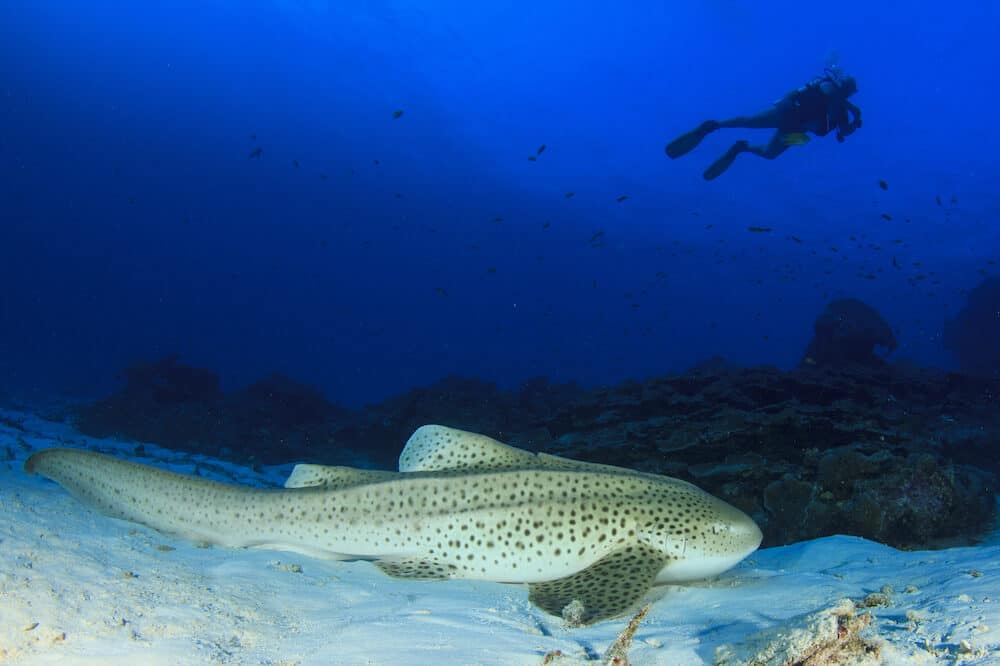
Best time to dive in Thailand
Thailand consists of two coastlines, the Andaman Coast and the Gulf Coast, both of which have opposite high seasons and low seasons.
The high season is an ideal period to visit as the weather conditions at sea are ideal. However, dive sites may be crowded with divers during this period, especially in popular places such as Koh Tao.
The shoulder seasons are also good but there may be the possibility of the odd tropical monsoon, with mostly good weather. The low season is best avoided due to frequent monsoon storms, rains and sometimes rough conditions at sea.
The best time to dive in the Andaman Coast
During the months of November until April excellent conditions and visibility can be found in the Andaman Sea, the busiest peak period for diving occurs over Christmas and New Year, until the end of January.
You can dive all year round in the region, except for on the islands of Koh Lipe and Koh Lanta which are partially closed and difficult to access from June and October.
The Similan Islands National Park can be accessed between the 16th of November until the 15th of May and is closed outside of this period to divers.
Best time to dive in the Gulf Coast
The Gulf Coast offers excellent conditions for less experienced divers and is ideal for learning with some shallow sites ranging from 5 metres to 20 metres and deeper, more challenging sites for the more experienced plunging down to 40 metres such as the famous Chumpon Pinnacle.
Plan your trip to arrive between May to October, during the high season, the exact opposite of the Andaman coast making Thailand perfect destination for diving any month of the year!
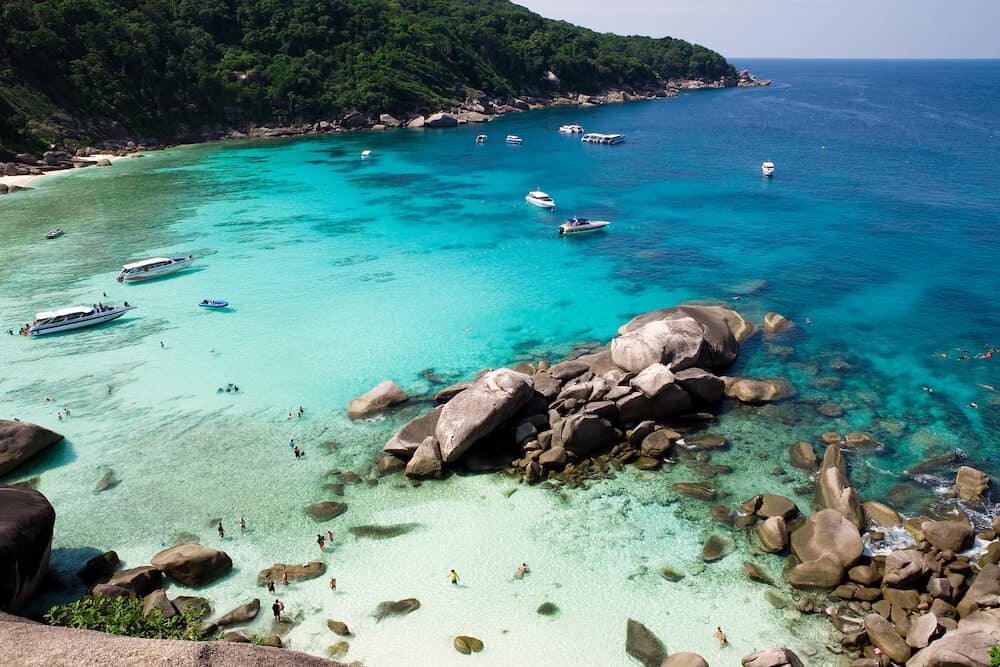
Best places to dive in Thailand
The Andaman Coast
Phuket
Phuket is one of the major tourist destinations for travellers to Thailand and there is a main airport in Phuket with numerous daily flights departing from Bangkok. Most of the diving spots are situated near Phi Phi Islands which offers excellent conditions for beginner and novice divers.
For divers with more experience and dives under their belt there are the sites of Hin Daeng (meaning Red Rock) and Hin Muang, (meaning Purple Rock) which are two submerged pinnacles 100 km away from Phuket with depths of up to 60 metres.
They are best dived during the months of November to April when divers have the incredible opportunity to have a close encounter with manta rays and perhaps the occasional pelagic whale shark! speedboat trips are organised regularly during the high season to these sites.
Another excellent choice for those looking for a more challenging dive is the King Cruiser Wreck, an 85 metre long passenger ferry that sunk on the 4th of May in 1997, this wreck starts at 12 to 30 metres and can be dived as part of the Advanced Diver course.
The multiple decks and open spaces and columns provide shelter to many fish species but due to its exposed position it can be subject to strong currents. Legend says that it was sunk as an insurance scam, as conveniently enough there were plenty of longtail boats around (in the middle of nowhere) to rescue passengers off the sinking ship!
The ultimate diving destination from Phuket is the Similan Islands National Park, one of the best of Thailand’s marine parks and listed in the top 10 dive sites of the world. The Similan Islands is an ideal destination for divers with quite a few dives under their belt as there are several more exposed, deeper dive sites which may be prone to strong currents.
The Similans offers incredible diving across reefs, gardens of colourful corals and deep gorges that plunge into the inky blue depths. They are most commonly visited by travelling on a daytrip from Khao Lak, which takes around 2 hours each way, but the very best way to explore the Similan Islands is by going on a Liveaboard.
Liveaboards are boats that allow you to stay on board in the comfort of a room as it travels from one site to another, the typical packages for Similan Liveaboards are 2 days, 3 days or 4 days and include a room, all meals and full kit of diving equipment.
Being on a liveaboard allows you to avoid the crowds underwater by being first on the dive site and you will travel overnight to the next dive spot so that you can wake up every morning in a different place. You will be doing on average 3 to 4 dives a day to ensure that you will experience a whole range of marine life and dive sites during your expedition.
Recommended diving trips from Phuket:
- Private Diving Trip at Racha Noi and Racha Yai from Phuket include Lunch
- Try Diving in the beautiful Andaman Sea
- 2-Day Similans Scuba Diving from Phuket
- Racha Yai Dive Trip from Phuket
- Scuba Diving Day Trip to Racha Yai from Phuket
- Full-Day Koh Bon Scuba Diving from Phuket
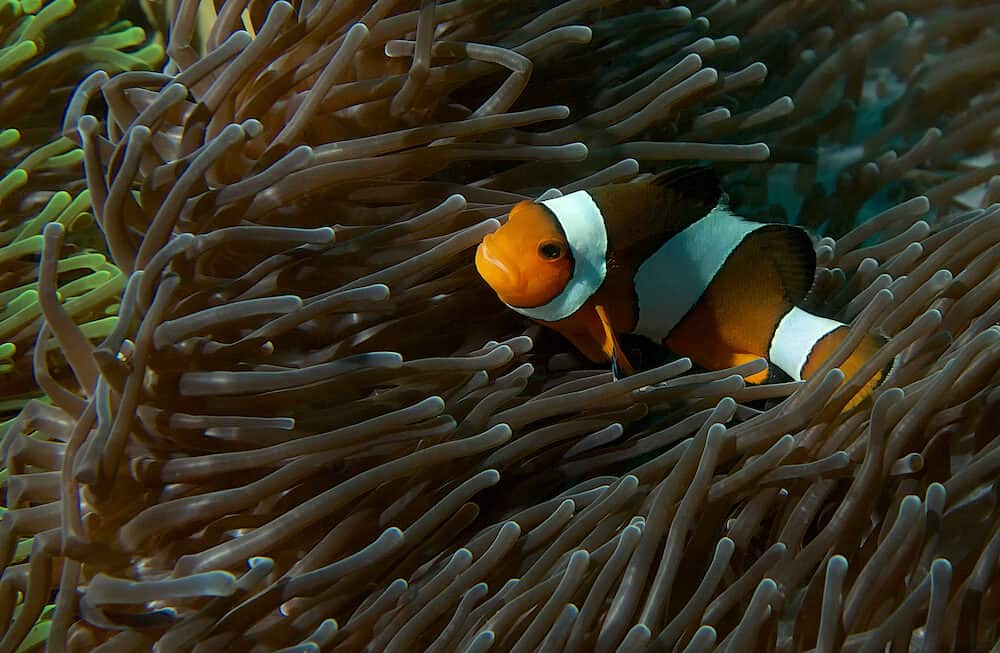
How to get to Phuket
From Bangkok there are low-cost flights operating to Phuket, the best being Air Asia and Nok Air. Alternatively, you can travel by overnight bus which departs Bangkok and takes approximately 16 hours, remember to pack a hoodie or a warm blanket as the air-conditioning in buses in Thailand is always cranked to sub-zero temperatures!
Best diving schools in Phuket and Khao Lak
- Khaolak Scuba Adventures They offer excellent liveaboards to explore the Similan Islands
- Super Divers Phuket For Similan liveaboards and daily dive trips at a five star PADI dive centre.
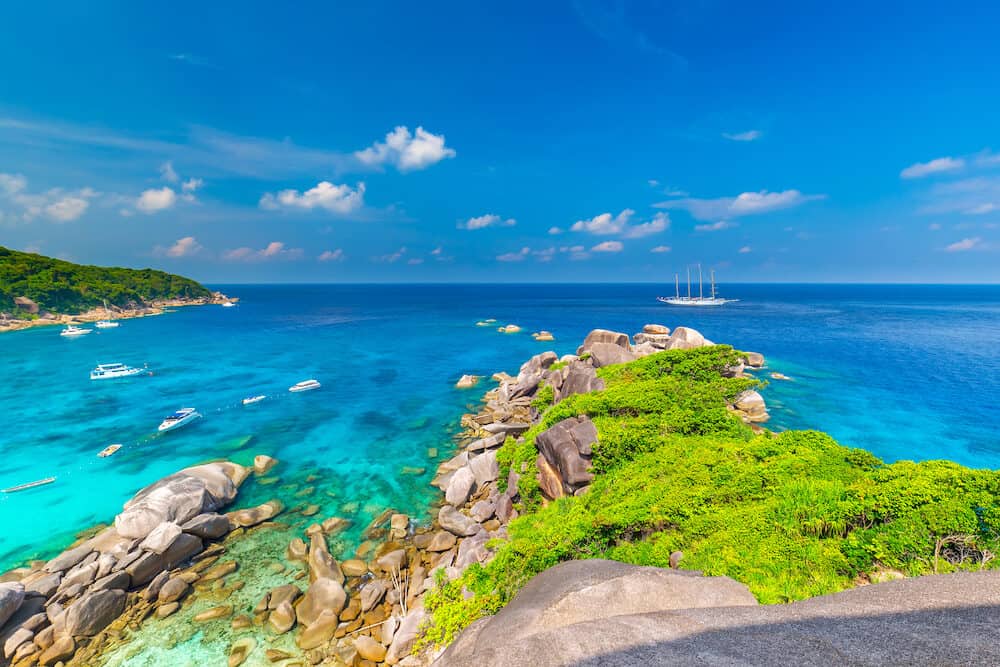
Koh Phi Phi
Renowned for being one of the best diving destinations on the Andaman Coast, it’s where everyone goes to dive from Phuket. Koh Phi Phi has 11 prime dive sites located within a short boat trip from Phi Phi Don. The stars in its crown are Bida Nok and Bida Nai, just beyond Phi Phi Ley Island.
Here you may encounter resident hawksbill turtles, lazy leopard sharks and the odd seahorse aside from the usual suspects.
It’s also a fantastic place to do your Open Water Course if you want to begin your diving adventures as there are also shallow reefs with plenty of marine life to uncover, hidden in every nook and cranny of the reef.
There are also nearby site Gareng Heng, which is not frequently dived but provides divers with the opportunity to see large rays, eagle rays and maybe the odd nurse shark.
From Koh Phi Phi you can also reach Hin Deang and Hin Muang by speedboat and the journey takes around 1.5 hours by speedboat. You can also dive at the King Cruiser Wreck and Shark Point from Koh Phi Phi which takes around 1.5 hours each way.
Recommended diving trips from Phi Phi:
- Fundiving Kled Keaow Wreck
- Local Diving, Koh Phi Phi
- Scuba diving in Phi Phi islands National park
- Fundiving Nightdive
- 3-Day PADI Open Water Scuba Diving Certification Course in Koh Phi Phi
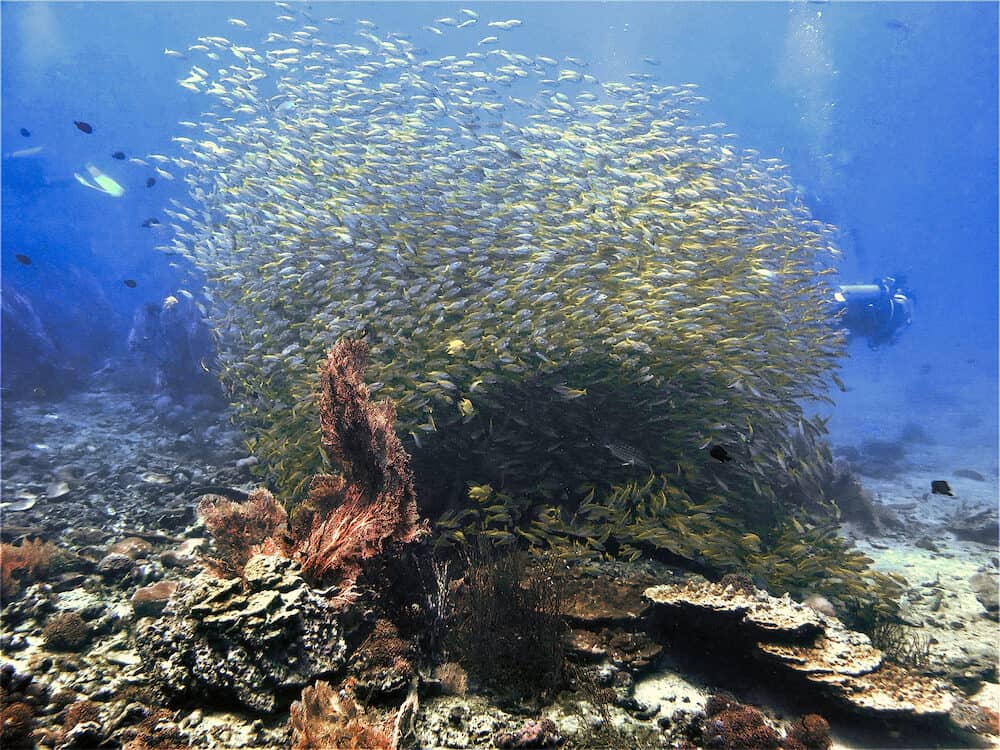
How to get to Koh Phi Phi
To dive Phi Phi, it’s best to spend a night or two there, due to it being a long-established tourist attraction, there is plenty of accommodation on the island but booking in advance is highly recommended, especially in peak season. Staying on the island allows you to be the early bird at the dive sites and beat the crowds of divers from large boats coming from Phuket.
Ferries travel several times a day between Phuket and Koh Phi Phi and the journey takes approximately an hour, with prices starting from 250 THB for a one-way journey. There is a charge of 400 THB upon arrival at Koh Phi Phi as it is a national park fee.
Best diving school in Koh Phi Phi
- Blue View Divers – For eco-friendly diving off a traditional longtail boat with small groups and beach lunches.

Koh Lanta
Koh Lanta is a quiet island situated a short ferry ride from Phuket and Koh Phi Phi. This peaceful island is also excellent for scuba diving with access to small nearby islands such as Koh Haa and Koh Rok as well as the Southern Islands providing an underwater paradise for muck divers with the wealth of macro-life.
Here you may encounter a hawksbill turtle cruising by or even come face to face with a leopard shark. Some caves and caverns can be explored by more experienced divers. The wide variety of sites also makes this an ideal destination for those seeking to obtain their Open Water Certification.
Hin Daeng and Hin Muang are also accessible by speedboat from Lanta and is a short journey away, here you can have the opportunity to dive one of the deepest drop-offs in Thailand, often frequented by large pelagics such as manta rays and whale sharks.
Recommended diving trips from Koh Lanta:
- Fun Diving Safari Day Trip From Koh Lanta – Certified Divers
- Mangrove Cruise, Caves & Try Dive Day Trip
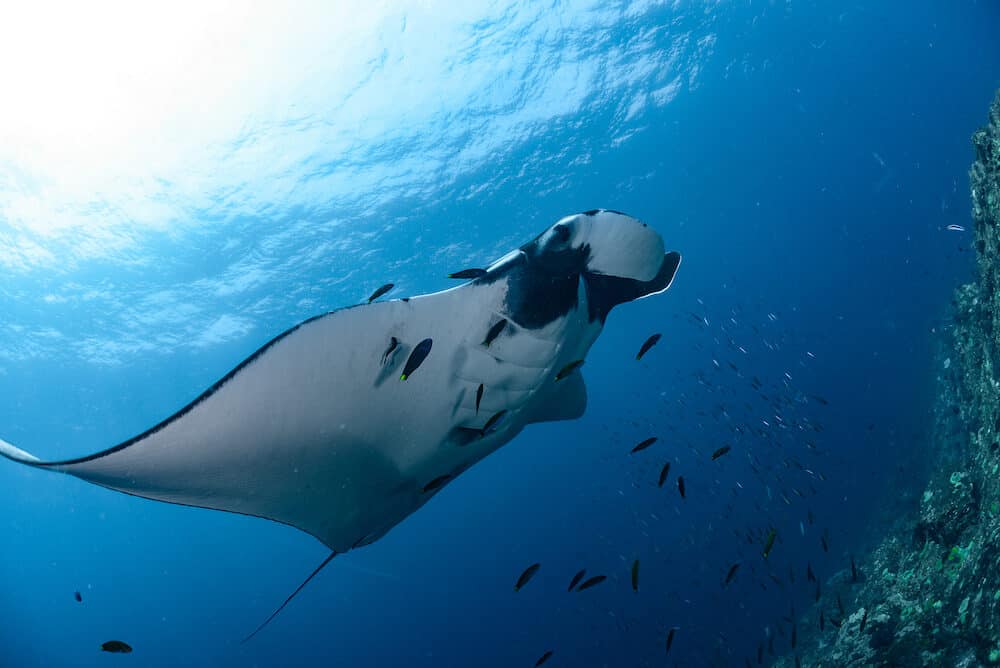
How to get to Koh Lanta
There are daily ferries from Phuket (a journey of 1.5 to 2 hours) and Koh Phi Phi to Koh Lanta (1 hour). Boat travel is still possible during the low season but ferry services are reduced and weather conditions can vary.
There is a national park fee of 600 THB for divers and snorkelers and boat trips in Koh Lanta. It is recommendable to stay on the island overnight if you plan to dive there, and the island is host to plenty of comfortable hotels and guesthouses on the island to suit every budget.
Best diving school in Koh Lanta
- Scubafish – For quality courses and small groups, Scubafish provides safe and professional dive guidance and training for divers of all levels.
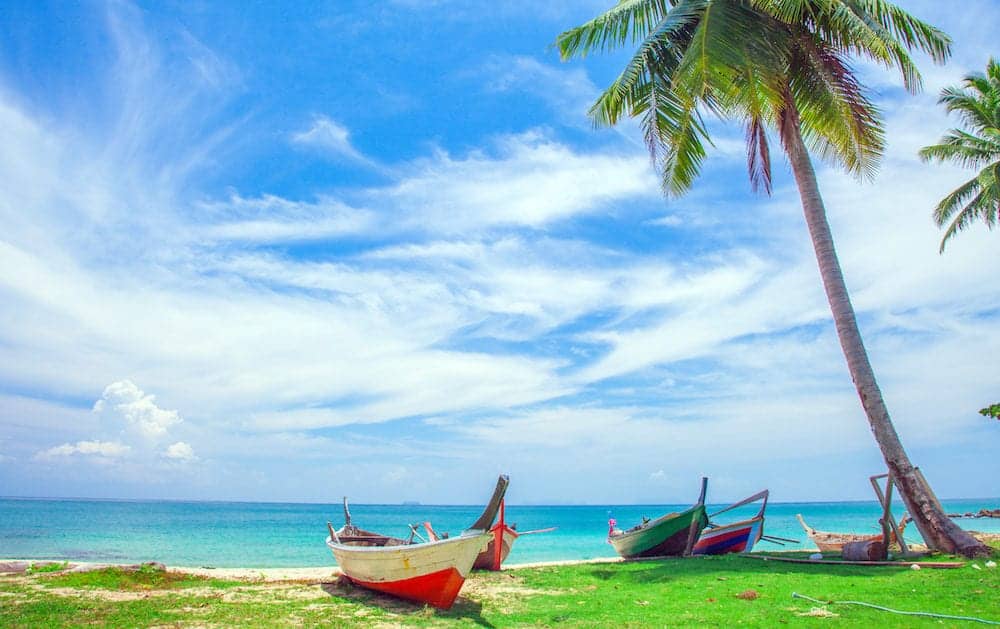
Koh Lipe
If you want to escape the crowds in high season, head to the more remote island of Koh Lipe. Less developed than the other islands, it is only open during the high season for six months of the year.
You can travel there in the low season, however, it’s more difficult to reach by boat due to limited service and many restaurants and hotels will be closed during this period.
Koh Lipe has fantastic diving on sites, especially Stonehenge which is popular as a deep dive with the chance to see fauna such as sharks and rays, and Eight Mile Rock with its deep pinnacles and possibility of seeing the endangered whale shark, barracudas and other marine life.
The deeper sites are perfect for experienced divers, whilst there are plenty of shallow sites for carrying out diving courses.
Recommended diving trips from Koh Lipe:
- 2-Day Advanced Open Water Diver Course in Ko Lipe Satun
- PADI Open Water Diver Course
- Discover SCUBA Diving
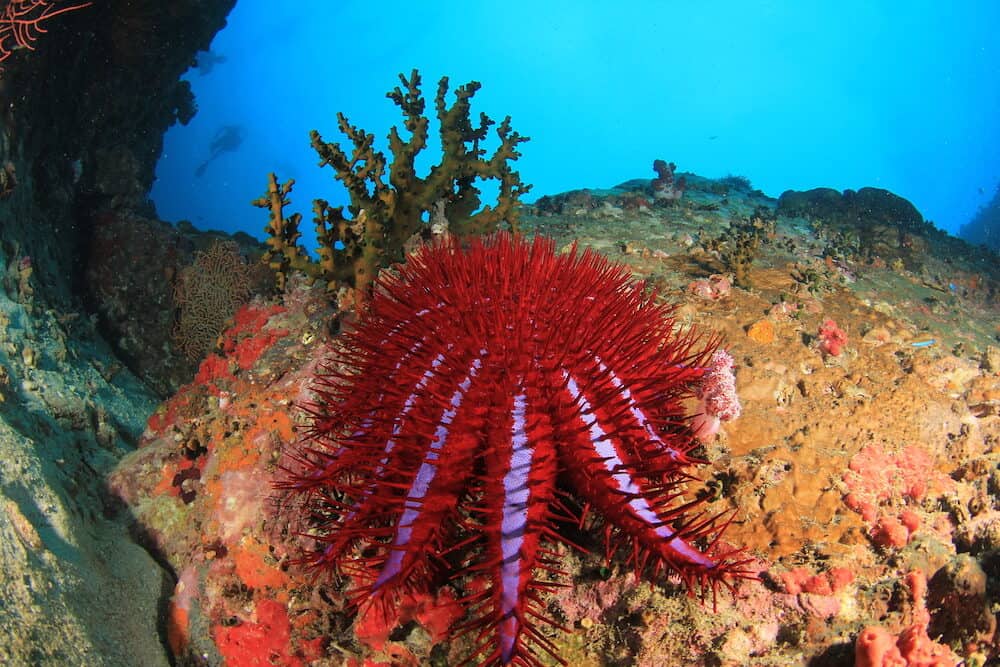
How to get to Koh Lipe
To get to Koh Lipe, you can take a speedboat from Koh Lanta, Koh Phi Phi or Phuket.
From Koh Lanta it takes three hours, from Koh Phi Phi the journey takes four hours, from Phuket it takes five hours. Despite being a long boat ride, it will be well worth it to discover a less touristy part of Thailand. Don’t forget to bring your sea sickness tablets!
Best diving schools in Koh Lipe
- Keirita’s yoga and Diving – If you plan on both diving and yoga, look no further! Personalised diving trips and yoga classes daily.
- Adang Sea Divers – well-established diving school on Sunrise Beach offering big boat dives and accommodation.
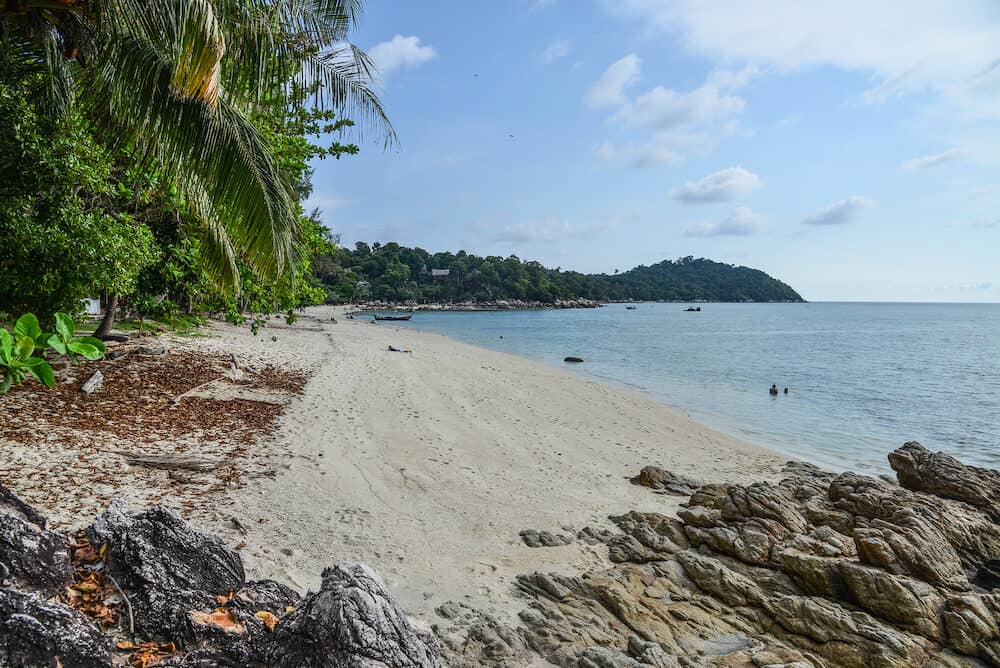
The Gulf Coast
Koh Tao
The most popular diving spot draws thousands and thousands of tourists annually as it is one of the cheapest places to obtain your Open Water Certification. Because of its popularity, the dive sites are often quite crowded.
Koh Tao boasts plenty of diving sites to cater for every level of diver and for the more experienced divers, head to Chumpon Pinnacle and Southwest Pinnacle for the opportunity to see the majestic whale shark or even the odd bull shark circling the depths of this pinnacle.
Sail Rock is also situated two hours by boat from Koh Tao and boasts a chimney or vertical cave which you can swim through! Other notable dive sites include Green Rock and Shark Island (no sharks live there, though!).
However, Koh Tao’s marine life is not as abundant as on the Andaman Coast and there are fewer species to see around the dive sites. You may encounter the odd black-tip reef shark, see clown anemonefish and also a variety of smaller critters.
The dive sites are usually accessible, sheltered and easy to dive making it an ideal place for learners and first-time divers who will not go home disappointed!
Recommended diving trips from Koh Tao:
- Koh Tao Dive Tour Including 2 Dives for Certified Divers
- Discover Scuba diving with 2 dives on Koh Tao
- Half-Day 3 Fun Dives in Koh Tao
- Diving Trip at Koh Tao from Koh Samui for certified divers
- 2 Day Open Water Course at Koh Tao All-in Liveaboard
- Discover Scuba Diving at Koh Tao or Sail Rock from Koh Samui
- Chumphon Pinnacle-Koh Tao 2 dive trip

How to get to Koh Tao
Koh Tao is reached by regular ferries operating from Krabi on the Gulf Coast. From Krabi town, you must take a 3-hour bus to Donsak and board a ferry which takes around 3 hours going via Koh Samui and Koh Phangan.
If you don’t mind roughing it, there are overnight options which allow you to sleep on board, but facilities are basic: there are thin mattresses provided on the floor but if you have your own sleeping bag, this is a good opportunity to use it.
Best diving school in Koh Tao
- Master divers – a well-established diving school with big boats whilst offering small group dives with a maximum of four divers per instructor/guide.
- Buddha View – This chilled out resort and dive school offer courses in a number of languages, as a bonus there is a cool bar on the next cove, accessible by a walkway over the shallow waters.
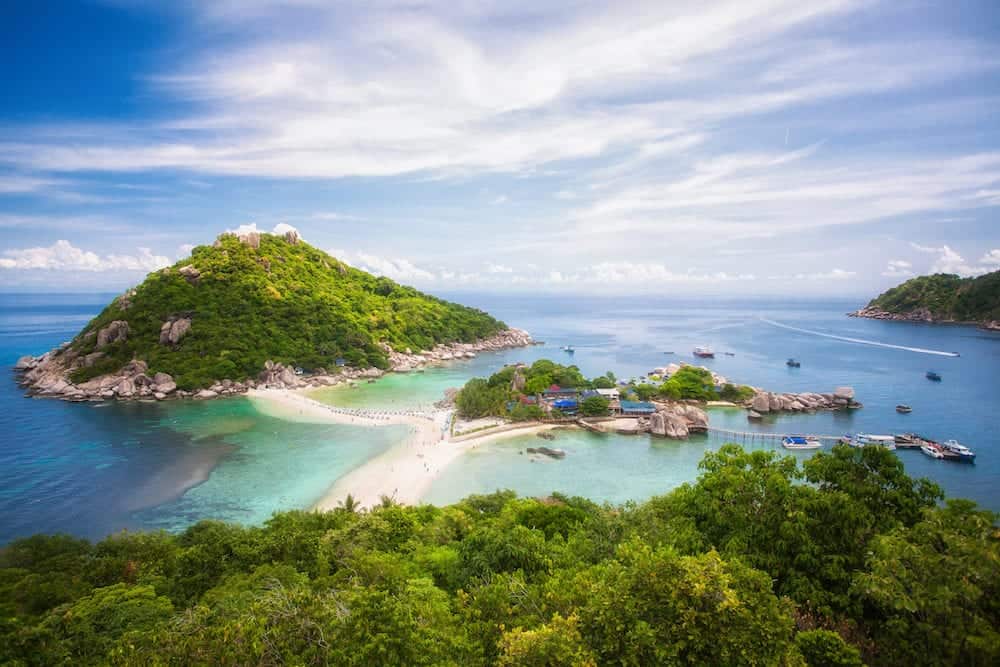
Koh Phangan
Known as “party island”, Koh Phangan is famed for its legendary full moon, half-moon and black moon parties. Aside from partying there are plenty of dive sites around Koh Phangan which are suitable for all levels of divers.
You can find beautiful schooling bannerfish flitting amongst the corals at Koh Ma, explore the colourful reefs of Mae Haad, Haad Yao and Haad Salat and even dive Rock Point which is a smaller version of Koh Tao’s famous Sail Rock, these are some of the most popular sites from Koh Phangan.
Recommended diving trips from Koh Phangan:
- 4S Fun Dives in Koh Tao
- PADI Discover Scuba Diving Experience at Sail Rock From Koh Phangan
- Fun Diving Trip to Sail Rock From Koh Phangan
- PADI Scuba Diver Course in Koh Phangan
- Discover SCUBA Diving on Koh Phangan, Thailand
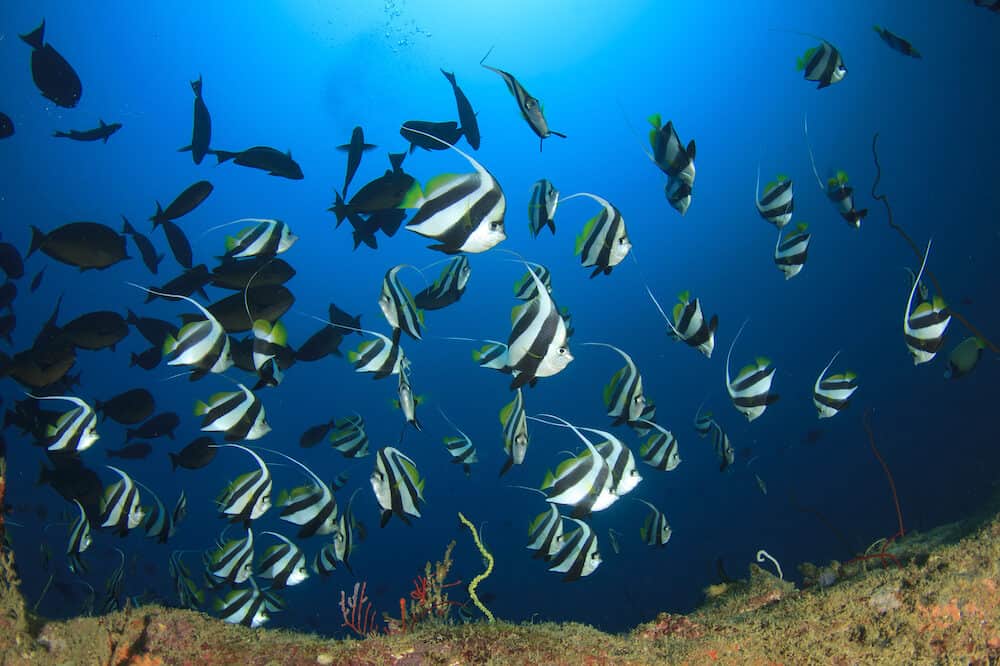
How to get to Koh Phangan
The ferry to Koh Tao goes via Koh Phangan, so the process is the same. You will need to catch a 3-hour bus from Krabi to Donsak and jump on a ferry, the journey takes approximately 2 hours by boat.
Alternatively, you can fly to Koh Samui from Bangkok or Phuket to take the ferry from there, the journey by boat takes only around 45 minutes each way.
Best diving schools in Koh Phangan
- Pirate Divers – For excellent customer service and small groups of divers, this dive school offers daily trips to local dive sites.
- The Dive Inn – Offering relaxed diving with a high level of customer attention. Though a little more expensive, offers excellent and unbeatable customer service.
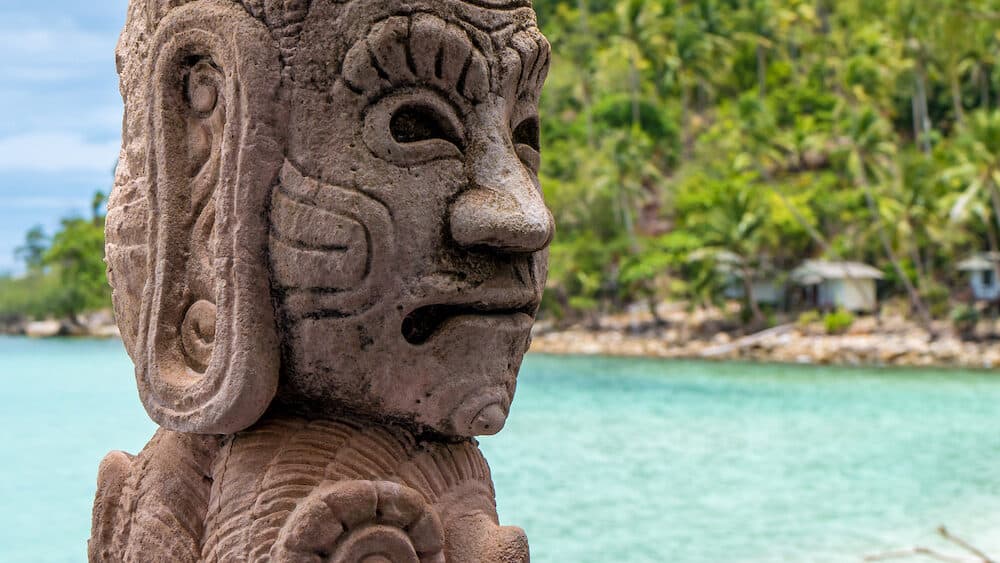
If you’d like to save it for later, please save it to Pinterest.
